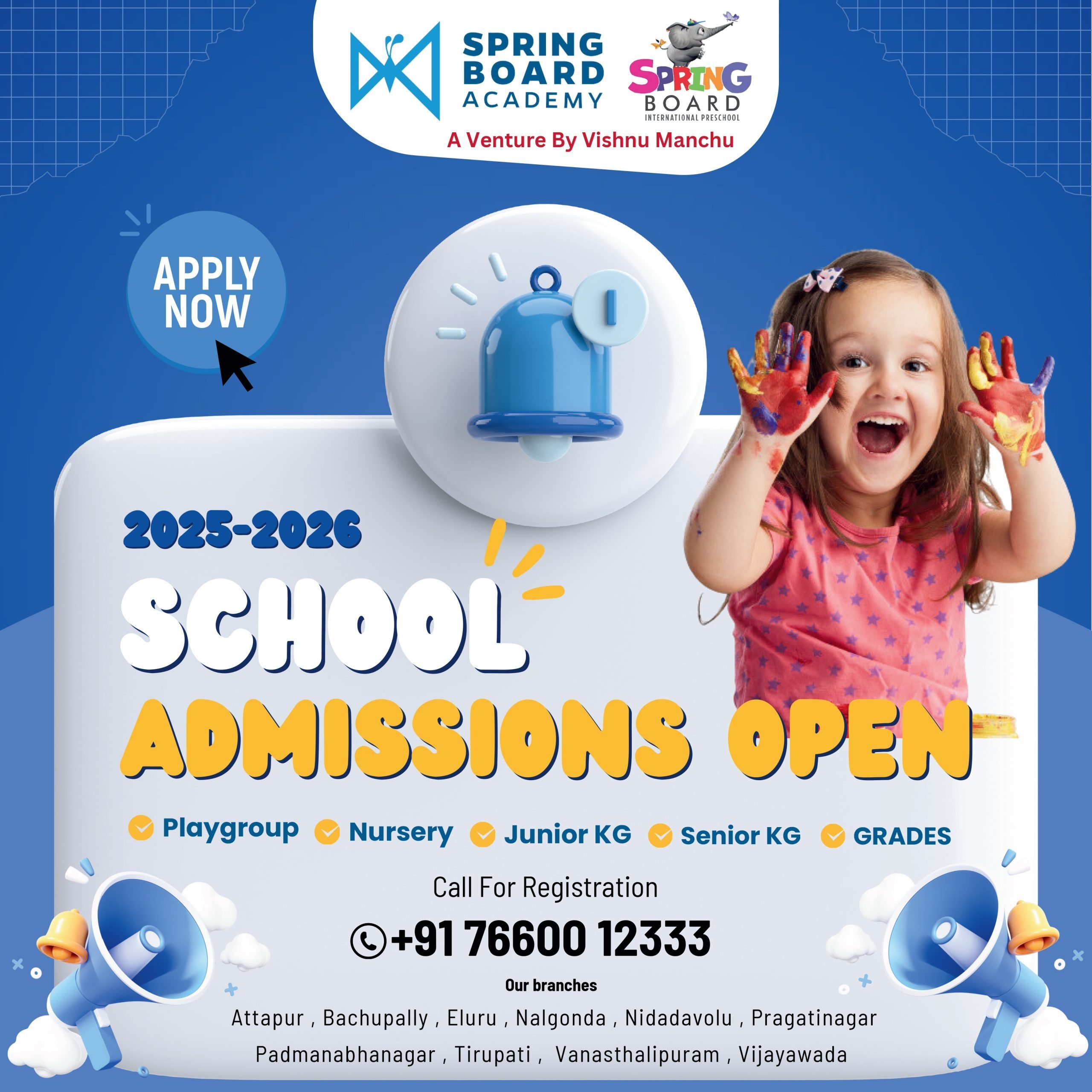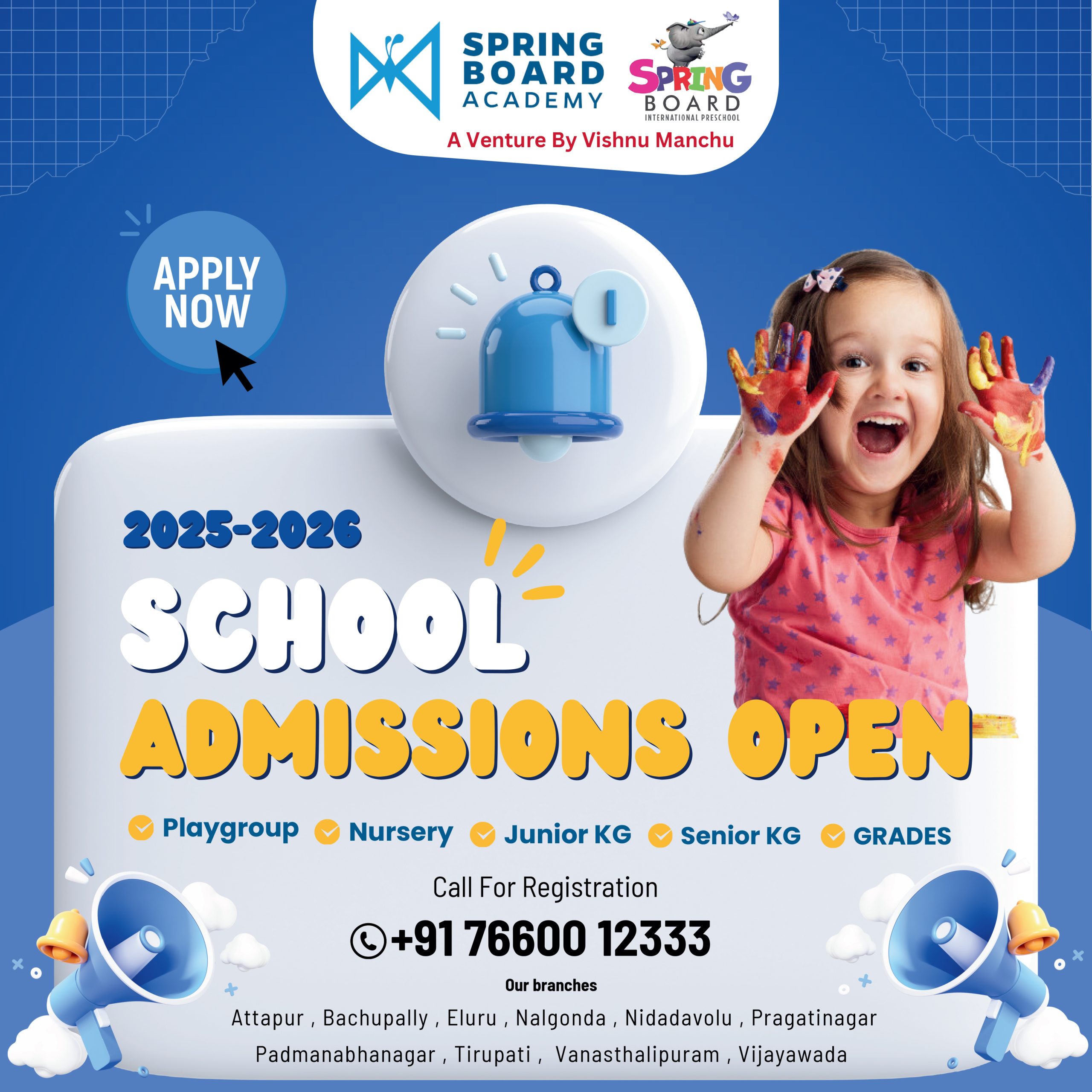Vision:
Vision and Mission: Our prime vision is to develop in each child 21st century competencies and help them reach their full potential in a safe and comfortable learning environment so that they are equipped with skills to navigate a fast-changing world and grow up to become:
- A confident person
- A self-directed learner
- An active contributor
- A responsible citizen
The vision of Spring Board envisages:
- To create an excellent educational institution that incorporates human values with the highest quality of teaching and learning methodologies using modern technology-driven tools for preparing a well-rounded personality for our society
- To give every student an access to world-class infrastructure, and an innovative curriculum that promotes the all-round development of the child imbibing traditional values
- To inspire a lifelong love of learning by providing a thoughtful, nurturing environment for children that fosters creativity, independence and social confidence in a dynamic, joyful setting that is respectful of each child’s needs and individuality
Mission:
The Spring Board School has pledged to prepare innovative, skilled and economically independent individuals, who will be leaders in their respective fields. The school aims to provide:
- A sensitive consideration to a multi-ethnic mix of children, where we respect and tolerate people regardless of their faith, beliefs or characteristics
- To provide a warm, caring environment through play and work, when the child is ready
- To be an extension of home and to teach trust
- To encourage mutual respect and social skills
- To have a positive approach to school life
- To teach fundamental values
- To have a happy and safe environment; and
- Spirituality and worship in a non-denominational setting
Our Philosophy:
The early years of a child have a critical influence on later development and learning. Quality learning experiences have been found to make a difference to the future achievements of children. For children to be long-life learners, they have to be able to:
- Explore the Environment
- Be able to solve problems
- Use language to express themselves
- Co-operate with others to play and work
Philosophy:
Our philosophy is based on progressivism, Social reconstructionism, Existentialism, Essentialism and Perrenialism. Here the progressivism, Social Reconstructionism, and Existentialism view a learner as the centre of classroom activities. Working with student interests and needs, teachers serve as guides and facilitators in assisting students to reach their goals. The emphasis is on the future, and on preparing students to be independent-thinking adults.
- Progressivists strive for relevant and hands-on learning
- Social reconstructionists want students to actively work to improve society
- Existentialists give students a complete freedom and complete responsibility, with regard to their education
Essentialism and Perennialism give teachers the power to choose the curriculum, organize the school day, and construct classroom activities. The curriculum reinforces a predominantly universal heritage and disciplined in the proven strategies of the past.
- Essentialists focus on cultural literacy
- Perennialists work from the Great Books

 LEARNING CYCLE ……….. THIS COMES IN 3 DESIGN MODULES:
LEARNING CYCLE ……….. THIS COMES IN 3 DESIGN MODULES: 
 HOW TO APPLY CONSTRUCTIVISM IN A CLASSROOM???…………………………………… POSE PROBLEMS THAT ARE OR WILL BE RELEVANT TO THE STUDENTS. STRUCTURE LEARNING AROUND ESSENTIAL CONCEPTS. APPLYING “BIG IDEAS” TO VARIOUS SUBJECT AREAS. BE AWARE THAT STUDENTS’ POINTS OF VIEW ARE WINDOWS INTO THEIR REASONING. ASSESS STUDENTS LEARNING IN THE CONTEXT OF TEACHING. POSE PROBLEMS THAT ARE OR WILL BE RELEVANT TO THE STUDENTS. STRUCTURE LEARNING AROUND ESSENTIAL CONCEPTS. APPLYING “BIG IDEAS” TO VARIOUS SUBJECT AREAS. BE AWARE THAT STUDENTS’ POINTS OF VIEW ARE WINDOWS INTO THEIR REASONING. ASSESS STUDENTS LEARNING IN THE CONTEXT OF TEACHING.
HOW TO APPLY CONSTRUCTIVISM IN A CLASSROOM???…………………………………… POSE PROBLEMS THAT ARE OR WILL BE RELEVANT TO THE STUDENTS. STRUCTURE LEARNING AROUND ESSENTIAL CONCEPTS. APPLYING “BIG IDEAS” TO VARIOUS SUBJECT AREAS. BE AWARE THAT STUDENTS’ POINTS OF VIEW ARE WINDOWS INTO THEIR REASONING. ASSESS STUDENTS LEARNING IN THE CONTEXT OF TEACHING. POSE PROBLEMS THAT ARE OR WILL BE RELEVANT TO THE STUDENTS. STRUCTURE LEARNING AROUND ESSENTIAL CONCEPTS. APPLYING “BIG IDEAS” TO VARIOUS SUBJECT AREAS. BE AWARE THAT STUDENTS’ POINTS OF VIEW ARE WINDOWS INTO THEIR REASONING. ASSESS STUDENTS LEARNING IN THE CONTEXT OF TEACHING. 

